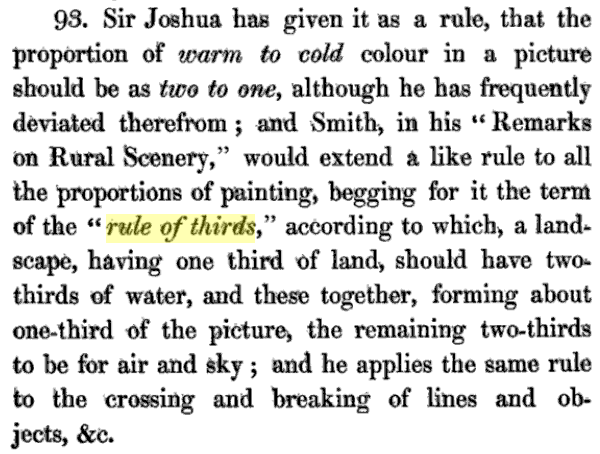http://en.wikipedia.org/wiki/Golden_ratio

http://en.wikipedia.org/wiki/Rule_of_thirds
Elemental Concepts
http://en.wikipedia.org/wiki/Notan
http://en.wikipedia.org/wiki/Chiaroscuro



-----------------------------------------------------
A metaphor is generally considered to be more forceful and active than an analogy (metaphor asserts two topics
are the same whereas analogies acknowledge differences). Other rhetorical devices involving comparison, such
as metonymy, synecdoche, simile, allegory and parable, share much in common with metaphor but are usually
distinguished by the manner in which the comparison between subjects is delivered.
Metaphor
http://en.wikipedia.org/wiki/Metaphore
From Wikipedia, the free encyclopedia
(Redirected from Metaphore)
Jump to: navigation, search
This article may require cleanup to meet Wikipedia's quality standards. Please improve this article if you
can. (November 2008)
This article is about metaphor in literature and rhetoric. For metaphors in cognitive linguistics, see conceptual
metaphor. For metaphors in psychotherapy, see therapeutic metaphor. For metaphors in computer science, see
interface metaphor.
Sister project Look up metaphor in
Wiktionary, the free dictionary.
Metaphor (from the from Latin metaphora; see the Greek origin below) is language that directly connects seemingly unrelated subjects. It is a figure of speech that connects two or more things without using the words "like" or "as." More generally, a metaphor describes a first subject as being or equal to a second object in some away. This device is known for usage in literature, especially in poetry, where with few words, emotions and associations from one context are associated with objects and entities in a different context.
----------------------
Metonymy
http://en.wikipedia.org/wiki/Metonymy
From Wikipedia, the free encyclopedia
Jump to: navigation, search
To comply with Wikipedia's guidelines, the introduction of this article may need to be rewritten. Please
discuss this issue on the talk page and read the layout guide to make sure the section will be inclusive of all
essential details.
Metonymy (IPA: /mɨˈtɒnɨmi/) (from the Greek: μετωνυμία, metōnymía, "a change of name", from μετά, metá,
"after, beyond" and -ωνυμία, -ōnymía, a suffix used to name figures of speech, from ὄνῠμα, ónyma or ὄνομα,
ónoma, "name"[1]) is a figure of speech used in rhetoric in which a thing or concept is not called by its own
name, but by the name of something intimately associated with that thing or concept.[1]
Metonymy can involve the use of the same word, in which case it is a kind of polysemy, in which a single word
has multiple related meanings (sememes), i.e. a large semantic field.
Metonymy may be instructively contrasted with metaphor. Both figures involve the substitution of one term for
another. In metaphor, this substitution is based on similarity, while in metonymy, the substitution is based on
contiguity.
----------------------
Synecdoche
http://en.wikipedia.org/wiki/Synecdoche
From Wikipedia, the free encyclopedia
Jump to: navigation, search
This article is about the linguistic term. For the Charlie Kaufman film, see Synecdoche, New York.
Synecdoche (pronounced "si-NEK-duh-kee", IPA: /sɪˈnɛkdəˌki/; from Greek synekdoche (συνεκδοχή), meaning
"simultaneous understanding") is a figure of speech in which:
The word "synecdoche" is derived from the Greek συνεκδοχή, from the prepositions συν- + εκ- and the verb -
δέχομαι (accept), originally meaning accepting a part as responsible for the whole, or vice versa.
Synecdoche is closely related to metonymy (the figure of speech in which a term denoting one thing is used to
refer to a related thing); indeed, synecdoche is considered a subclass of metonymy. It is more distantly related
to other figures of speech, such as metaphor.
More rigorously, metonymy and synecdoche may be considered as sub-species of metaphor, intending metaphor
as a type of conceptual substitution (as Quintilian does in Institutio oratoria Book VIII). In Lanham's Handlist of
Rhetorical Terms p. 189 the three terms have somewhat restrictive definitions, arguably in tune with a certain
interpretation of their etymologies from Greek:
* metaphor: changing a word from its literal meaning to one not properly applicable but analogous to it;
assertion of identity rather than, as with simile, likeness.
* metonymy: substitution of cause for effect, proper name for one of its qualities, etc.
* synecdoche: substitution of a part for whole, species for genus, etc.
[edit] Use
The use of synecdoche is a common way to emphasize an important aspect of a fictional character; for
example, a character might be consistently described by a single body part, such as the eyes, which come to
represent the character. This is often used when the main character does not know or care about the names of
the characters that he/she is referring to.
Also, sonnets and other forms of love poetry frequently use synecdoches to characterize the beloved in terms
of individual body parts rather than a whole, coherent self. This practice is especially common in the Petrarchan
sonnet, where the idealised beloved is often described part by part, from head to toe.